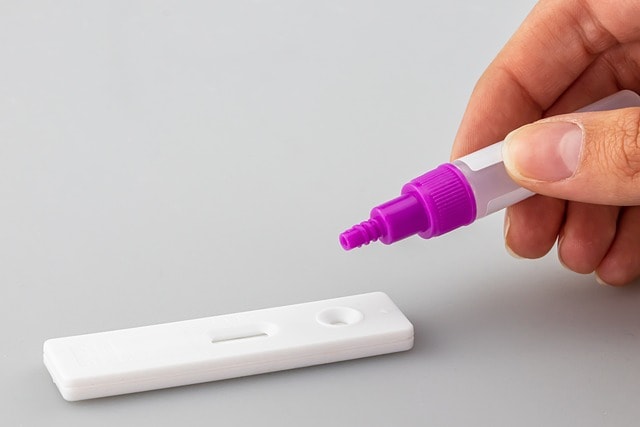How Long Does Ecstasy Stay In Your System?
Ecstasy, also known as MDMA, is a popular recreational drug used for its euphoric, hallucinogenic, and stimulant properties. However, understanding how long ecstasy stays in your system is important for various reasons, including health, legal, and employment concerns. The use of ecstasy can lead to drug abuse, and drug tests are often used to detect its presence. This article will delve into the factors that affect ecstasy detection time, the duration of its effects, and methods for detecting its presence in your body.
Factors Affecting Ecstasy Detection Time

Several factors can influence how long ecstasy remains detectable in your system. These include:
Dosage

The amount of ecstasy consumed significantly affects how long it stays in your body. Higher doses generally take longer to be metabolized and excreted. For instance, consuming a small dose may result in a shorter detection window, whereas larger doses can extend the duration that ecstasy is detectable. It’s crucial to note that the body’s ability to metabolize the drug, and therefore its half life, can vary significantly from person to person, even with the same dosage.
Frequency of Use
If you use ecstasy frequently, it can accumulate in your system, leading to longer detection times. Chronic users may have traces of the drug in their system for extended periods compared to occasional users. For example, a person who uses ecstasy every weekend may find that the drug is detectable for a longer period than someone who only uses it once a month. This accumulation can complicate detection and may lead to false positives in drug tests.
Metabolism
Your metabolic rate plays a crucial role in how quickly your body can process and eliminate drugs. Individuals with faster metabolisms will typically clear ecstasy from their systems more quickly than those with slower metabolisms. Metabolic rate can be influenced by various factors including genetics, diet, and physical activity levels. Therefore, two individuals with different metabolic rates can have significantly different detection times even if they consume the same amount of ecstasy.
by Roman Davydko (https://unsplash.com/@jdavydko)
Age and Health Conditions

Age and overall health can also impact how long ecstasy stays in your system. Older individuals and those with compromised liver or kidney function may process the drug more slowly, leading to longer detection times. For example, a young, healthy individual may metabolize ecstasy more efficiently than an older person with liver issues. It’s essential to consider these factors when evaluating the potential duration that ecstasy can be detected in your body.
Hydration and Body Composition
Hydration levels and body composition can influence the rate at which ecstasy is eliminated from your body. Staying well-hydrated can help expedite the excretion process. Additionally, individuals with higher body fat percentages may retain the drug longer, as ecstasy can be stored in fat tissues. Conversely, those with leaner body compositions may eliminate the drug more quickly. Therefore, maintaining good hydration and understanding your body composition can be key factors in the detection time of ecstasy.
by 21 swan (https://unsplash.com/@paradox21)
Duration of Ecstasy’s Effects
Ecstasy’s effects can be felt within 30 to 45 minutes after ingestion and can last for several hours. The peak effects usually occur 1 to 2 hours after consumption. The duration of these effects can vary based on several factors, including dosage, individual tolerance, and the presence of other substances. Understanding the timeline of these effects can help users manage their experiences and anticipate any potential after-effects.
Immediate Effects
The immediate effects of ecstasy include increased energy, emotional warmth, and enhanced sensory perception. These effects usually last between 3 to 6 hours. Users often report feeling more sociable and connected to those around them during this period. However, it’s important to note that the intensity of these effects can vary based on individual tolerance and the environment in which the drug is consumed.
After-Effects
After the initial high, users may experience a “come down” period, which can include feelings of fatigue, depression, and irritability. These after-effects can last for several days. This period can be challenging, as the body and mind recover from the intense stimulation experienced during the drug’s peak effects. Proper rest, hydration, and nutrition can help mitigate these after-effects and aid in a smoother recovery process.
Detection Methods
by CDC (https://unsplash.com/@cdc)
Various methods can detect the presence of ecstasy in your system. Each method has its own detection window, which refers to the period during which the drug can be identified. Understanding these methods can help you prepare for potential drug test and manage the implications of ecstasy use.
Urine Test
Urine tests are the most common method for detecting ecstasy. MDMA can be detected in urine for up to 2 to 4 days after use. However, in some cases, it may be detectable for up to a week, especially in frequent users. This method is often used in workplace drug screenings and by law enforcement due to its ease of administration and relatively long detection window.
Blood Tests
Blood tests can detect ecstasy within 1 to 2 days after use. Due to the short detection window, blood tests are less commonly used for routine drug screening but may be employed in specific situations, such as medical emergencies. These tests provide a more immediate detection method, making them useful in cases where recent use needs to be confirmed quickly.
by Testalize.me (https://unsplash.com/@testalizeme)
Saliva Tests
Saliva tests can detect ecstasy for up to 1 to 2 days after use. These tests are less invasive than blood tests and are often used for roadside drug testing by law enforcement agencies. Saliva tests offer a convenient and quick method for detecting recent drug use, making them ideal for on-the-spot testing scenarios.
Hair Follicle Tests
Hair tests have the longest detection window and can identify ecstasy use for up to 90 days or more after the last use. However, they are less commonly used due to their higher cost and the requirement for specialized equipment. These tests can provide a comprehensive history of drug use, making them useful in legal cases or long-term monitoring situations.
by National Cancer Institute (https://unsplash.com/@nci)
Understanding Ecstasy Addiction

Understanding how long ecstasy stays in your system is crucial for making informed decisions about its use. Various factors, including dosage, frequency of use, metabolism, and overall health, can influence the detection time. The Drug Enforcement Administration (DEA) has highlighted the importance of understanding these factors, as different testing methods have varying detection windows, from a few days to several months. If you or someone you know is struggling with MDMA addiction or other drugs, seeking professional help is essential for recovery and well-being.
By staying informed and making responsible choices, you can better manage the risks associated with ecstasy use and protect your health and future. Knowledge about detection times and the impacts of ecstasy use can empower individuals to make safer and more informed decisions regarding their health and lifestyle choices.
Signs of Ecstasy Addiction
by Myriam Zilles (https://unsplash.com/@myriamzilles)
Common signs of ecstasy addiction include:
-
Craving the drug
-
Inability to control or reduce use
-
Neglecting responsibilities and relationships
-
Continued use despite negative consequences
-
Withdrawal symptoms when not using
These signs can manifest in various aspects of an individual’s life, from personal relationships to professional responsibilities. Early recognition and intervention can prevent the escalation of addiction and its associated harms.
Seeking Help

If you or someone you know is struggling with addiction, it is important to seek professional help. ecstasy addiction treatment options include:
-
Detoxification: The first step in the recovery process, detoxification helps to cleanse the body of the drug under medical supervision. This process can help manage withdrawal symptoms and set the stage for further treatment. Professional addiction treatment centers offer medical detoxification services to ensure a safe and supportive environment during this crucial phase.
-
Therapy: Various forms of therapy, including cognitive-behavioral therapy (CBT) and group therapy, can help address the underlying causes of addiction and develop coping strategies. These therapeutic approaches, often provided as part of a comprehensive addiction treatment program, can provide the tools needed for long-term recovery and relapse prevention. Treating ecstasy addiction often involves a combination of individual and group therapy tailored to address the specific challenges associated with MDMA use.
-
Support Groups: Joining support groups, such as Narcotics Anonymous (NA), can provide a sense of community and ongoing support during the recovery journey. These groups offer a platform for sharing experiences, gaining insights, and receiving encouragement from others who have faced similar challenges.
by Mathew Schwartz (https://unsplash.com/@cadop)
Conclusion

Understanding how long ecstasy stays in your system is crucial for making informed decisions about its use. Various factors, including dosage, frequency of use, metabolism, and overall health, can influence the detection time. Different testing methods have varying detection windows, from a few days to several months. If you or someone you know is struggling with mdma addiction or other substance abuse, seeking professional help is essential for recovery and well-being.
By staying informed and making responsible choices, you can better manage the risks associated with ecstasy use and protect your health and future. Knowledge about detection times and the impacts of ecstasy use can empower individuals to make safer and more informed decisions regarding their health and lifestyle choices.
Seeking Treatment? We Can Help!
We work with PPO Out of Network Health Insurance Policies
If you or a loved one are struggling with mental health challenges or substance abuse, reach out to Mountain Sky Recovery today. Our team of compassionate professionals is here to support your journey towards lasting well-being. Give us a call at 951-877-5868.
FAQs For How Long Does Ecstasy Stay In Your System?
1. How Long Does Ecstasy Stay In Your System
Ecstasy is detectable for varying durations depending on the type of drug test:
- Urine: Up to 5 days
- Blood: Up to 3 days
- Saliva: Up to 3 days
- Hair: Several months
2. What factors influence how long ecstasy stays in your system?
Several factors affect the duration of ecstasy detection:
- Amount consumed: Higher doses may be detectable for longer periods.
- Frequency of use: Regular users may have longer detection times than occasional users.
- Individual metabolism: Individual variations in metabolism can affect how quickly the drug is eliminated.
- Overall health: Underlying health conditions can influence drug elimination rates.
3. Can I do anything to speed up the elimination of ecstasy from my body?
No scientifically proven methods exist to accelerate the elimination of ecstasy. However, staying hydrated and maintaining a healthy lifestyle can support your body’s natural detoxification processes.
4. Are there any risks associated with long-term ecstasy use?
Yes, long-term ecstasy use can lead to various health risks, including:
- Neurological problems: Memory impairment, depression, anxiety.
- Cardiovascular issues: High blood pressure, irregular heartbeats.
- Hepatotoxicity: Liver damage.
- Psychological issues: Dependence, addiction.














